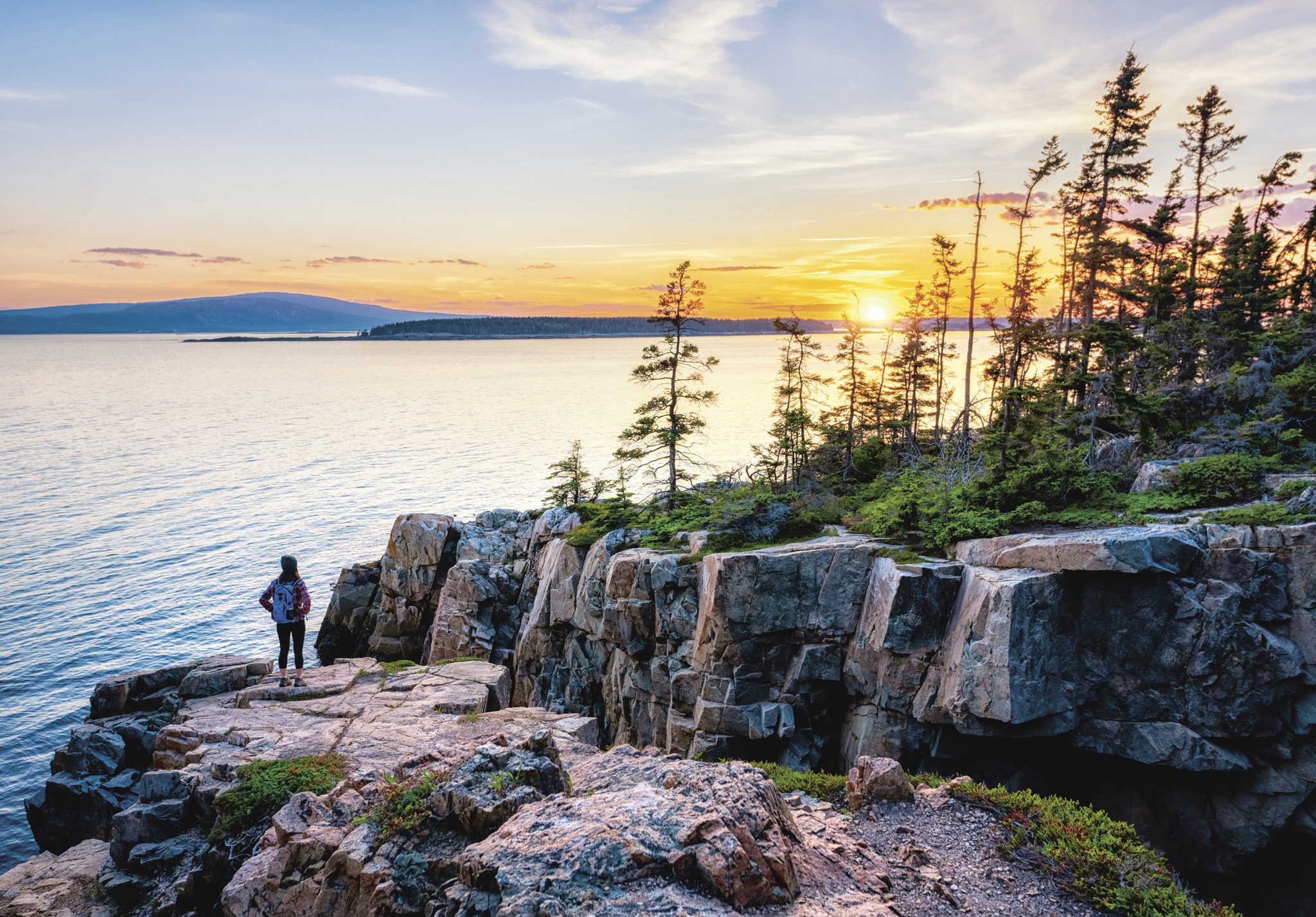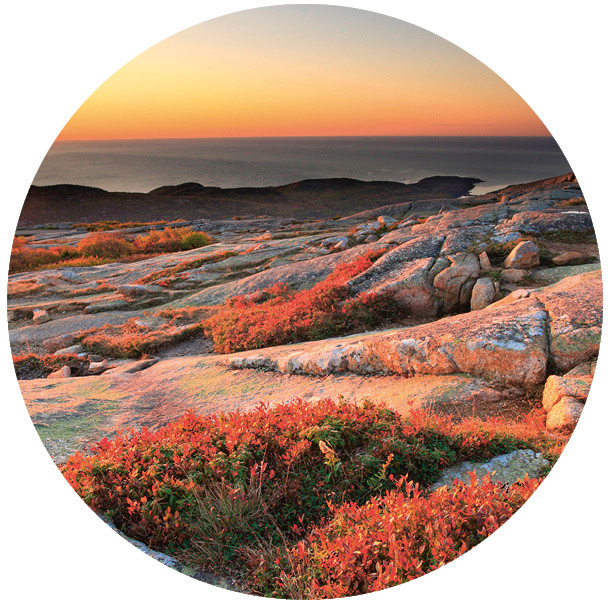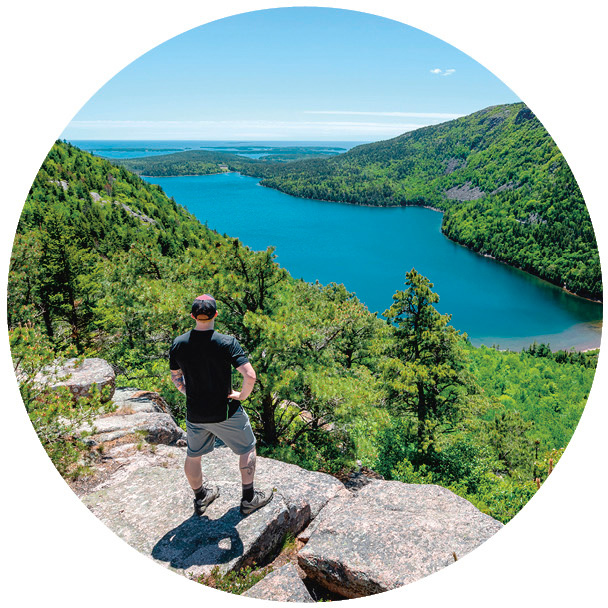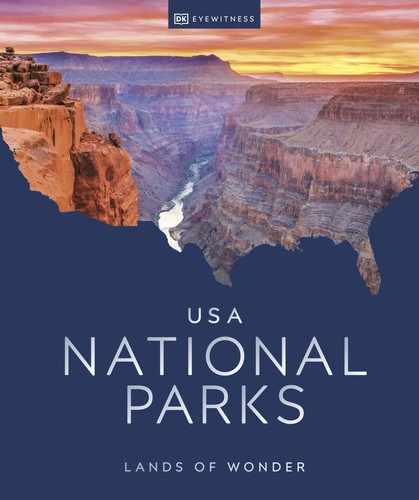
Maine
ACADIA
ESTABLISHED 1919
Nestled in the islands of coastal Maine, a romantic and charming natural oasis awaits. With serene boulder-filled lakes, granite mountains, hardwood forests, and dramatic coastal beaches, Acadia tees up countless outdoor adventures.
The Wabanaki people lived for thousands of years on what is now national parkland. They were blessed by plentiful fishing and easy gathering in the warm seasons. Over time, the land passed to others, and in the mid-19th century it became a retreat for “rusticators” (nature tourists) and artists who reimagined beautiful landscapes to share with the world. Classic painters like Frederic Edwin Church (1826–1900) and Thomas Cole (1801–48) documented the region. Their work was found by John D. Rockefeller and George B. Dorr, who later donated thousands of acres of land to the government with the proviso that it be protected. Donations followed from locals who wanted the area preserved.
Today, Acadia remains the only national park that came about entirely through private funding. Forty-five miles (72 km) of historic carriage roads and bridges commissioned by Rockefeller meander through Mount Desert Island, allowing land passage without obstruction from cars, just as he envisioned. Stops along Ocean Drive bring cyclists, hikers, and visitors to Thunder Hole, Boulder Beach, and Jordan Pond along a 27-mile (43-km) stretch of stone road. At the bottom of the island is the picture-perfect Bass Harbor Head Lighthouse. Other park areas sit on small islands accessible by boat. On the Schoodic Peninsula, you’ll find a less-frequented area admired for its peaceful solitude.

Bass Harbor Head Lighthouse is one of the most photographed lighthouses in the US
BEST FOR
Painting and Photography
Acadia has a much revered artist-in-residence program. This initiative invites accomplished artists, in a variety of disciplines, to apply for a 14 day placement and during this time they create works to inspire the world to visit Acadia.
![]()
The best time to visit is September and October, after the summer crowds thin and at the start of peak fall-foliage season.

A hiker enjoys sunset near Schoodic Point, the only part of the park on the mainland
Ways to Explore

South Ridge Trail ▷ Hike the Cadillac Mountain South Ridge Trail, a 7-mile (11-km) out- and-back journey that leads you to and from Acadia National Park’s highest peak, and the tallest mountain on the eastern seaboard. The peak is 1,530 ft (466 m) above sea level.

Park Loop Road ▷ Cycling is one of the most popular ways to experience the park. Cycle all or part of the 27-mile (43-km) winding, narrow Park Loop Road, where there are plenty of iconic stops along the route leading to inland lakes, historic sites, and rugged coastlines.

Jordan Pond Trail ▷ Take a leisurely wander along the Jordan Pond Trail and end with tea and popovers at the nearby Jordan Pond House, overlooking the water. Afternoon tea has been on the menu here since the 1890s.
